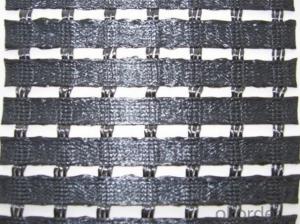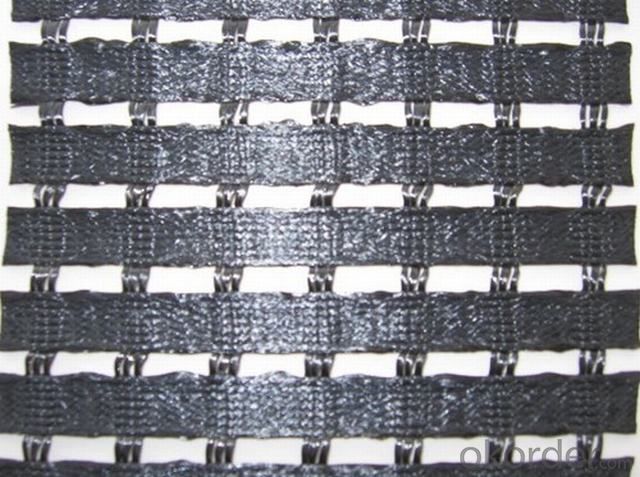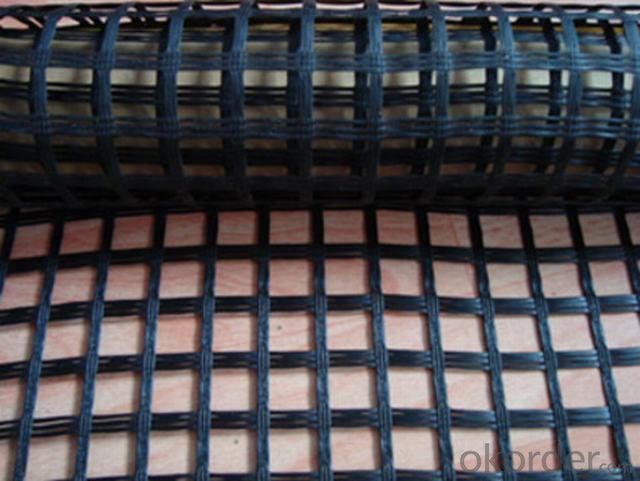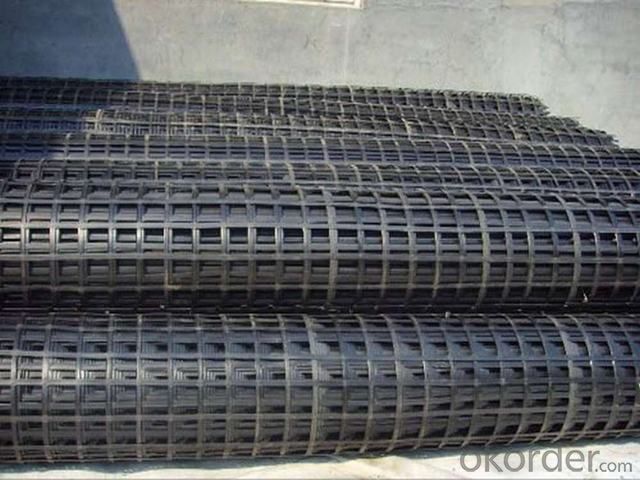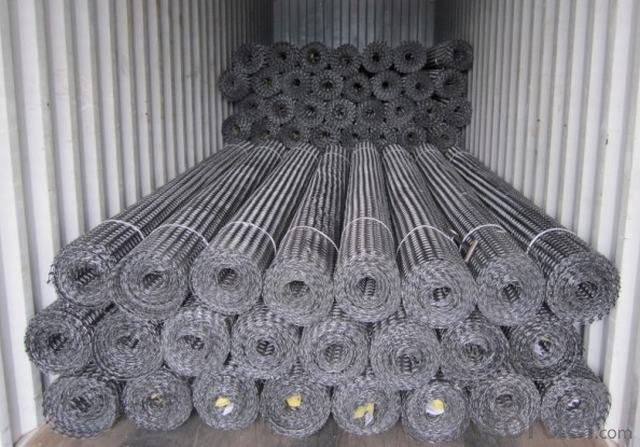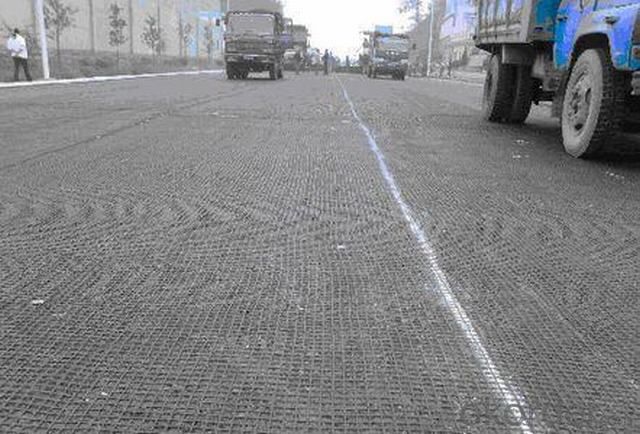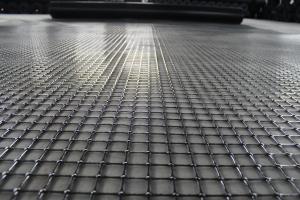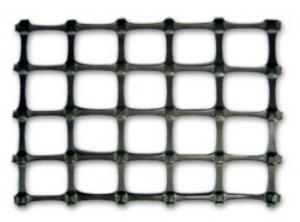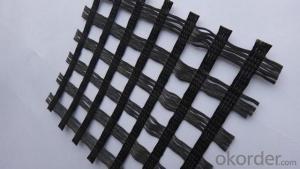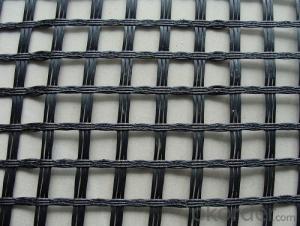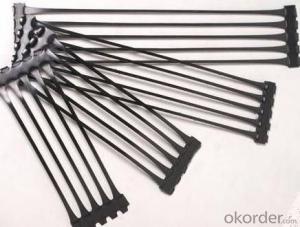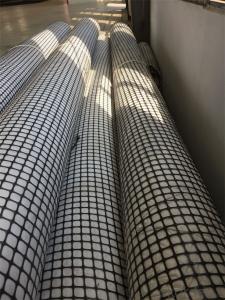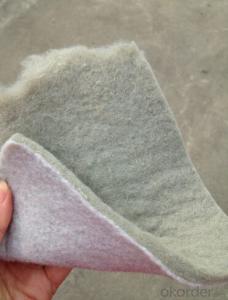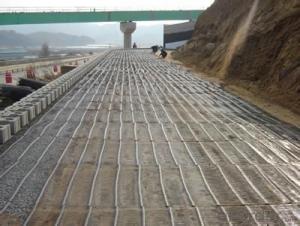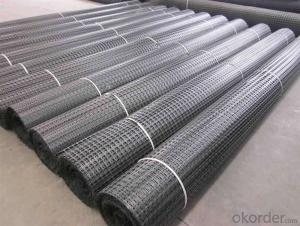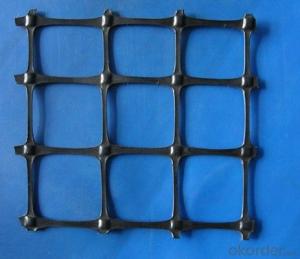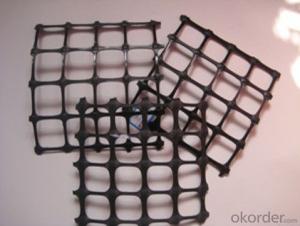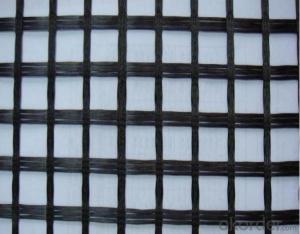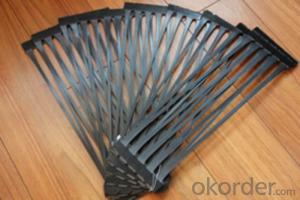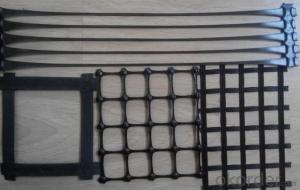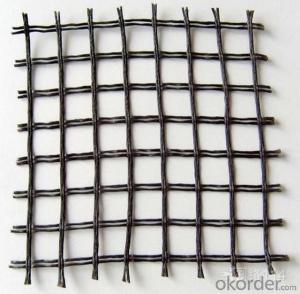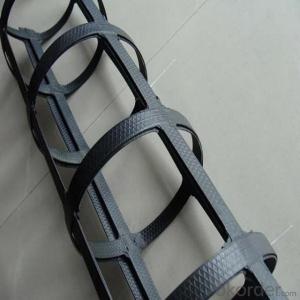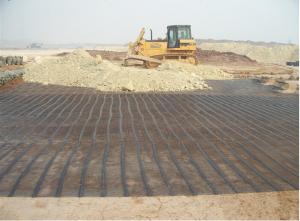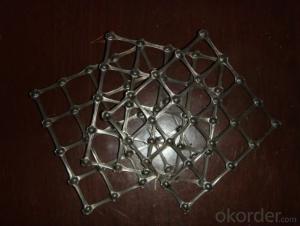Geogrids for Asphalt - Woven Polyester Geogrid with CE Certification
- Loading Port:
- Qingdao
- Payment Terms:
- TT or L/C
- Min Order Qty:
- 20000 m²
- Supply Capability:
- 10000000 m²/month
OKorder Service Pledge
OKorder Financial Service
You Might Also Like
1. Introduction:
The warp knitting polyster geogrid use excel raw materials, with warp knitting oriented structrue , latitude and longitude in the fabric to the yarn between not curving condition, the intersection unifies mutually with the excel in textile fiber filament bundle, forms the reliable combining site, displays its mechanical properties fully.
2. Features
The warp knitting polyste geogrid has high intensity, the high module, the low creep, anti-aging, anti-embrittlement, the tensile strength to be high strength, high anti-peel strength, with the soil crushed stone binding force strong.
3. Application
Reinforcing embankments of road, car parks, railways and airports
Embankments on piles
Reinforcement of fillings and soils, industrial areas, halls and shopping centers
Retaining walls
Landslides repairing
The construction of noise barriers
The stabilization of sea, river and reservoir banks
The reinforcement of any type of unstable foundation
Specification | Tensile Strength KN/M longitude latitude | Percetage Elongation ≤ % | Covering Rate ≥ % | |
100×120 | 120 | 100 | 10 | 20 |
100×100 | 100 | 100 | 10 | 20 |
80×80 | 80 | 80 | 10 | 20 |
80×50 | 80 | 50 | 10 | 20 |
50×50 | 50 | 50 | 10 | 20 |
50×35 | 50 | 35 | 10 | 20 |
40×40 | 40 | 40 | 10 | 20 |
30×30 | 30 | 30 | 10 | 20 |
20×20 | 20 | 20 | 10 | 20 |
100 | 100 | 10 | 10 | 20 |
80 | 80 | 10 | 10 | 20 |
50 | 50 | 10 | 10 | 20 |
40 | 40 | 10 | 10 | 20 |
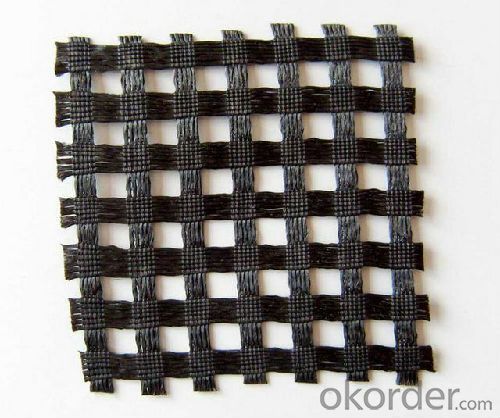
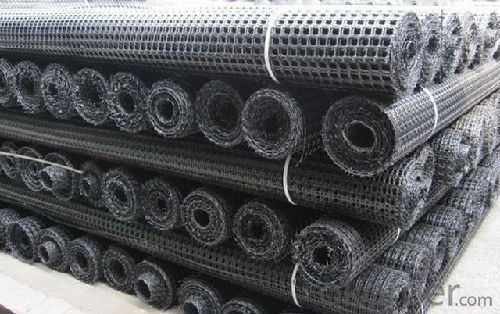
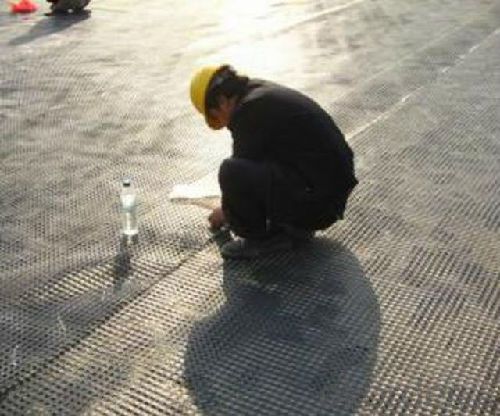
- Q: What are the advantages of using geogrids in construction projects?
- Geogrids offer several advantages in construction projects. Firstly, they provide reinforcement to the soil, increasing its stability and load-bearing capacity. This helps to prevent soil erosion, slope failures, and settlement issues. Secondly, geogrids are cost-effective as they reduce the need for extensive excavation and the use of additional materials. They also facilitate faster construction time as they can be easily installed. Additionally, geogrids are durable and resistant to environmental degradation, ensuring long-term performance and reduced maintenance. Overall, the use of geogrids in construction projects leads to improved safety, enhanced structural integrity, and cost savings.
- Q: What are the factors that affect the long-term oxidation resistance of geogrids?
- The factors that affect the long-term oxidation resistance of geogrids include the type and quality of polymer used in the geogrid manufacturing, the presence of antioxidants or stabilizers in the polymer, exposure to environmental conditions such as temperature, humidity, and UV radiation, as well as the level of mechanical stress or strain experienced by the geogrid over time.
- Q: Are geogrids resistant to acid degradation?
- Yes, geogrids are generally resistant to acid degradation. They are commonly made from materials such as polypropylene or polyester which have excellent resistance to acidic environments. This resistance allows geogrids to maintain their structural integrity and performance even when exposed to acidic conditions.
- Q: Can geogrids be used in reinforcement of soil-bentonite mixtures?
- Yes, geogrids can be used in the reinforcement of soil-bentonite mixtures. Geogrids are commonly used in geotechnical engineering for soil stabilization and reinforcement. They can improve the tensile strength and overall stability of soil-bentonite mixtures, making them a suitable choice for reinforcement purposes.
- Q: Can geogrids be used in reinforced earth bridge abutments in liquefaction-prone areas?
- Yes, geogrids can be used in reinforced earth bridge abutments in liquefaction-prone areas. Geogrids are often used in such areas to provide additional stability and to mitigate the effects of liquefaction. They help distribute loads and reinforce the soil, reducing the risk of settlement or failure during liquefaction events.
- Q: What are the long-term durability characteristics of geogrids?
- Geogrids have excellent long-term durability characteristics. They are typically made from high-strength materials such as polyester or polypropylene, which are resistant to degradation caused by UV exposure, chemical exposure, and biological factors. Geogrids also have high tensile strength, allowing them to withstand heavy loads and maintain their structural integrity over time. Additionally, they have low creep and deformation rates, meaning they can maintain their original shape and performance for an extended period. Overall, geogrids have proven to be highly durable and reliable for various applications in civil engineering and construction.
- Q: How do geogrids improve the performance of mechanically stabilized slopes in cold climates?
- Geogrids improve the performance of mechanically stabilized slopes in cold climates by providing reinforcement and stabilizing the soil, preventing slope failure due to freeze-thaw cycles. The geogrids act as a reinforcement layer, increasing the tensile strength and improving the overall stability of the slope. Additionally, they distribute the loads more evenly, reducing differential settlements and enhancing the slope's resistance to deformation caused by temperature fluctuations.
- Q: What is the difference between unidirectional geogrid and two-way geogrid
- An efficient stress transfer mechanism is formed, so that the local load can be quickly and effectively spread to a large area of soil, so as to achieve the purpose of reducing the local failure stress and improving the service life of the project.
- Q: Can geogrids be used in coastal erosion control?
- Yes, geogrids can be used in coastal erosion control. Geogrids are often employed as a reinforcement material to stabilize soil and prevent erosion in coastal areas. They can be used to strengthen slopes, retain beach or dune materials, and provide stability to coastal structures like seawalls or revetments. Geogrids are designed to withstand the harsh coastal environment and can effectively reduce the impact of wave and tidal action on the shoreline, making them a valuable tool in coastal erosion control efforts.
- Q: Can geogrids be used in ground stabilization for water treatment plants?
- Yes, geogrids can be used effectively in ground stabilization for water treatment plants. Geogrids are a type of geosynthetic material that provide reinforcement and stability to soils, making them ideal for preventing soil erosion and improving the load-bearing capacity of the ground. By using geogrids, water treatment plants can ensure the stability and longevity of their infrastructure, preventing soil settlement and potential damage caused by heavy equipment and machinery. Additionally, geogrids can help control soil erosion and maintain the integrity of slopes or embankments surrounding the water treatment plant, further enhancing its overall stability.
1. Manufacturer Overview
| Location | Shandong, China |
| Year Established | 2002 |
| Annual Output Value | Above US$ 20 Million |
| Main Markets | 20.00% North America 15.00% South America 15.00% Eastern Europe 10.00% Southeast Asia 10.00% Northern Europe 10.00% South Asia 10.00% Western Europe 5.00% Africa 5.00% Mid East |
| Company Certifications | ISO9001:2000; |
2. Manufacturer Certificates
| a) Certification Name | |
| Range | |
| Reference | |
| Validity Period |
3. Manufacturer Capability
| a) Trade Capacity | |
| Nearest Port | Qingdao Port |
| Export Percentage | 41% - 50% |
| No.of Employees in Trade Department | 6-10 People |
| Language Spoken: | English; Chinese; |
| b) Factory Information | |
| Factory Size: | Above 80,000 square meters |
| No. of Production Lines | Above 10 |
| Contract Manufacturing | Design Service Offered; Buyer Label Offered |
| Product Price Range | High; Average |
Send your message to us
Geogrids for Asphalt - Woven Polyester Geogrid with CE Certification
- Loading Port:
- Qingdao
- Payment Terms:
- TT or L/C
- Min Order Qty:
- 20000 m²
- Supply Capability:
- 10000000 m²/month
OKorder Service Pledge
OKorder Financial Service
Similar products
Hot products
Hot Searches
Related keywords
